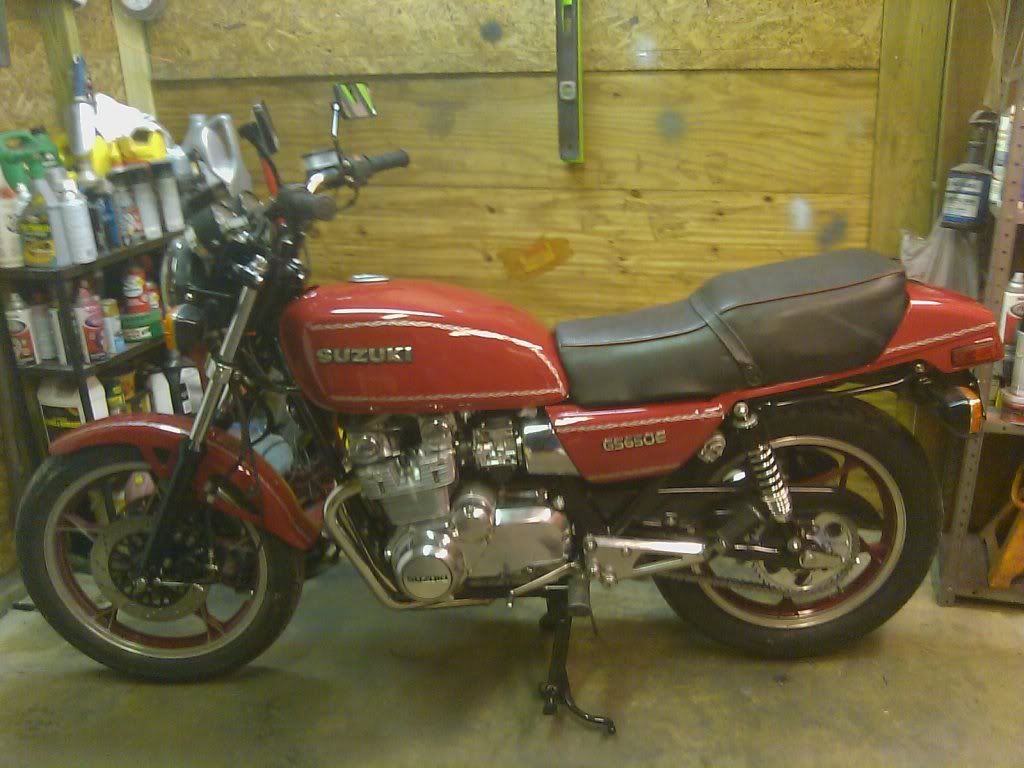Not sure if what I described as my problem is occurring with you but the weight transfer from front to back (when the rear compressed more than front) is what caused the woller (similar to what Steve is describing). In mine I had too stiff of a front due to too much stack height in my springs with Progressives and Cartridge emulators. 20 wt could contribute to the same thing. Front doesn't compress, the rear does and the weight transfer front to rear puts more sidewall pressure on a tall rear tire. You have aggravated the problem also by going two sizes over as well.
I would get a stock GS wheel that normally carried a 120/90-18 tire. The 130/70-18 will fit it nicely. When you change the tire, I would drop the front down by the 0.3" to compensate for the shorter rear tire as well. You loosen the triple clamp and allow the stanshions to slip up by the 0.3".
At least you will have separated the rake change from the side wall change this way.
Also what size rear wheel do you have? You might have improved things somewhat with the shorter side wall, but you still going a tire two size over v.s. just one.

I'm afraid you might have selective reading and are jumping to what seems like an easy solution in a new rear tire. Before you change the rear tire follow this:
1.) If you are putting something back to stock like wheel bearings and bushings fine. Hopefully this gets rid of some variables and will not hurt.
2.) Check your Ft/Back Sag numbers to confirm your spring rates are OK and adjust preload accordingly.
3.) Go back to the 15 wt oil in front.
4.) Road test over the dippy frost heaves as described by Sandy. My problem manifested itself when in a banked heaving conditions only.
http://www.thegsresources.com/_forum/showpost.php?p=1197199&postcount=5
Put tie straps on the front forks to see how much travel you are getting. Heavier oil is not really a replacement for more preload. I'm running 15 wt in all my bikes.
See how the bikes rides and if the problem has gone away or been moderated then......
5.) Change the rear tire prefereably on a wider wheel. In this order you will be able to tell the difference due to the wider tire independent of all the other potential problems. This is non stock and an experiment (also increase tire pressure).
.png)


.png)





Comment